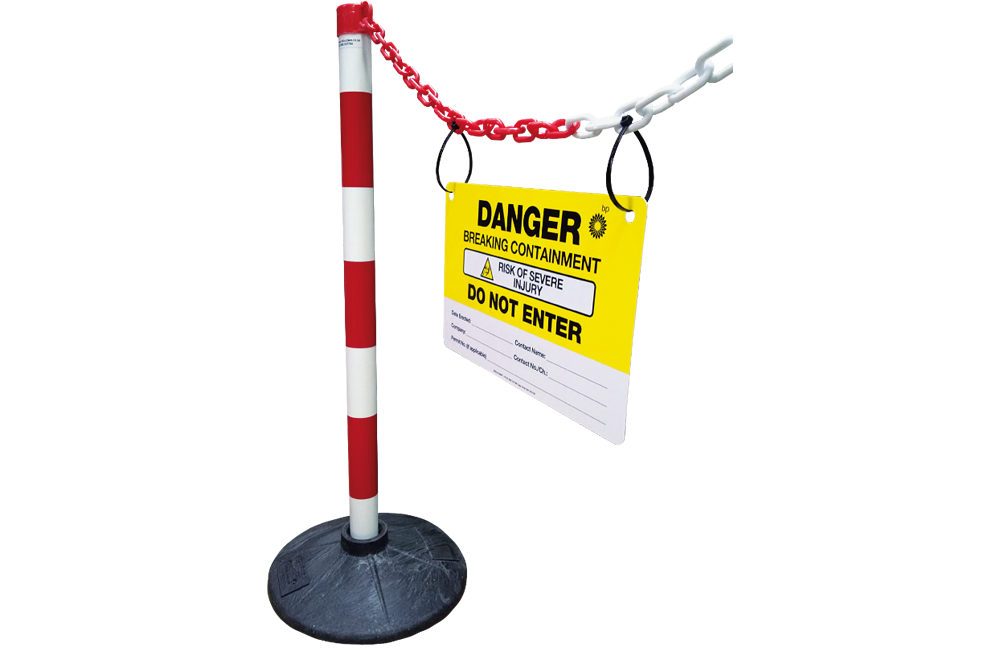Understanding Barrier Signs and Temporary Barriers
In this blog, we’re going to explore the characteristics, functions, and benefits of both barrier signs and temporary barriers to understand how they contribute to a comprehensive safety strategy.
In the realm of safety management and crowd control, barrier signs and temporary barriers are crucial elements. These two components often work together to ensure effective guidance and control of people in various settings. Without temporary barriers, barrier signs would lack the necessary support for optimal placement.
In this blog, we’re going to explore the characteristics, functions, and benefits of both barrier signs and temporary barriers to understand how they contribute to a comprehensive safety strategy.
Barrier Signs: Communicating Safety Messages
Barrier signs are visual aids designed to convey important safety information or instructions to individuals within a particular vicinity. These signs are typically made of durable materials such as metal or plastic, ensuring longevity and visibility in different weather conditions.
Commonly, barrier signs feature symbols, pictograms, or text, providing clear directives regarding hazards, prohibited areas, or required actions.
Key Characteristics of Barrier Signs
- Clarity and Visibility: Barrier signs are designed to be easily noticeable and comprehensible, even from a distance. They employ bold colours, contrasting text, and universally recognised symbols to convey messages effectively.
- Regulatory Compliance: Barrier signs often adhere to specific industry standards and regulatory requirements. They serve as a crucial component of safety protocols, alerting individuals to potential hazards and guiding them to take appropriate precautions.
- Informational Content: From indicating restricted access zones to highlighting emergency exits, barrier signs provide essential information that helps mitigate risks and enhance overall safety in various environments.

Temporary Barriers: Controlling Access and Movement
Temporary barriers, on the other hand, are physical structures erected to control the flow of people or vehicles, delineate boundaries, or restrict access to specific areas temporarily. These barriers are versatile and can be assembled, moved, or dismantled as needed, making them ideal for dynamic environments such as construction sites, event venues, or roadwork zones.
Key Characteristics of Temporary Barriers
- Mobility and Flexibility: Temporary barriers are designed to be portable and adaptable, allowing for quick deployment and reconfiguration based on changing requirements. They can be made of materials like plastic, metal, or even fabric, offering varying degrees of durability and flexibility.
- Versatility in Application: Temporary barriers serve multiple purposes, including crowd control, traffic management, and site security. Depending on the situation, they can be arranged in different configurations to achieve specific objectives effectively.
- Ease of Installation: Unlike permanent fixtures, temporary barriers can be set up and removed without extensive construction or installation processes. This flexibility enables rapid response to emergent situations or evolving operational needs.
- Visual Deterrence: In addition to physical obstruction, temporary barriers often feature reflective surfaces, bright colours, or warning stripes to enhance visibility and alertness, thereby reducing the risk of accidents or unauthorised access.

How Barrier Signs and Temporary Barriers Work Together
While barrier signs provide the necessary information and directives, temporary barriers create the physical structure needed to control and guide the movement of people and vehicles. Here are several scenarios where the combination of both is particularly effective:
- Construction Sites: Temporary barriers can outline restricted areas, while barrier signs provide safety warnings and instructions to workers and visitors.
- Event Venues: Temporary barriers manage crowd flow and access points, while barrier signs offer information on entry points, exits, and safety guidelines.
- Roadwork Zones: Temporary barriers direct traffic and protect workers, while barrier signs inform drivers of detours, speed limits, and potential hazards.
Contact us
We're just a call or click away.
Fill in the form below for direct contact with our team. We'll respond very shortly!
Benefits of Using Barrier Signs and Temporary Barriers
- Enhanced Safety: Combining physical barriers with clear signage improves overall safety by providing both visual and structural guidance.
- Efficient Crowd Control: Temporary barriers manage the movement and access of crowds, while barrier signs ensure everyone understands the rules and directions.
- Compliance and Regulation: Barrier signs help meet regulatory requirements, while temporary barriers can be adjusted to meet specific situational needs.
- Cost Efficiency: Investing in durable barrier signs reduces long-term costs associated with maintenance and replacement, while temporary barriers offer flexibility for different events and projects.
Barrier Signs from the Experts, REGALTAGS
If you’d like to find out more about how we can help with your barrier signs, contact our friendly team at REGALTAGS® today. We’re more than happy to answer any questions you have and can guide you through each material option.
Subscribe
Join 10,000+ others receiving our monthly updates. Free Tag knowledge delivered straight to your inbox.





